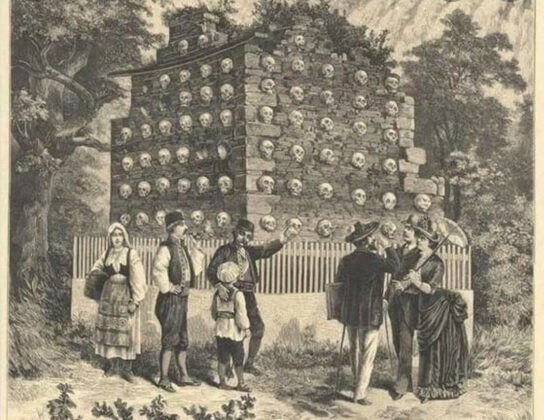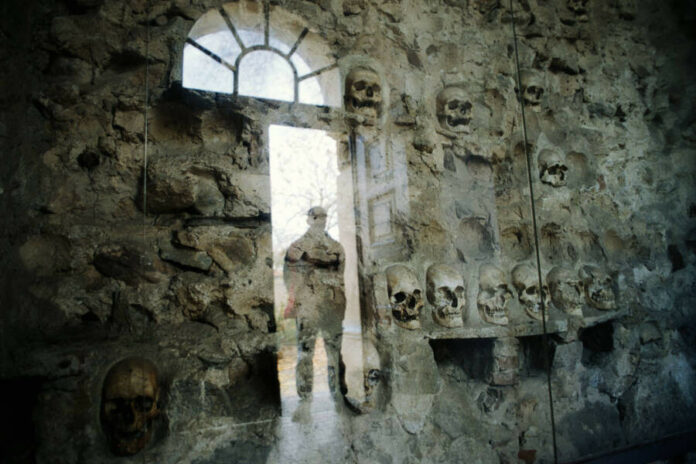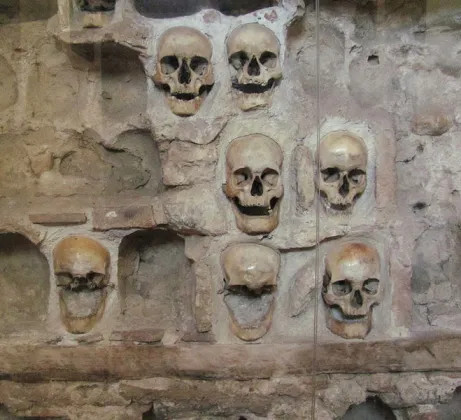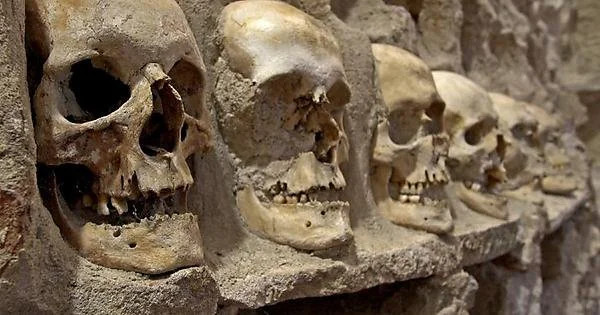The Skull Tower: A Haunting Reminder of Serbia’s Turbulent History
In the heart of Niš, Serbia, stands a macabre structure known as the Skull Tower, a haunting reminder of the country’s turbulent history under Ottoman rule. Constructed by the Ottoman Empire, this chilling monument is embedded with human skulls, a testament to the sacrifices made by Serbian rebels in their fight for independence.

The Battle of Čegar and the Birth of Skull Tower
The story of the Skull Tower traces back to the Battle of Čegar in May 1809, during the First Serbian Uprising against Ottoman rule. Serbian rebels under the command of Stevan Sinđelić were surrounded by Ottoman forces on Čegar Hill.

Facing certain death by impalement if captured, Sinđelić made the ultimate sacrifice by detonating a powder magazine within the rebel entrenchment, killing himself, his subordinates, and the encroaching Ottoman soldiers. In response, Hurshid Pasha, the governor of the Rumelia Eyalet, ordered the construction of a tower using the skulls of the fallen Serbian rebels, leading to the creation of the Skull Tower.

The Tower’s Rise and Fall
Originally standing 4.5 meters (15 feet) tall, the Skull Tower contained 952 skulls embedded on its four sides in 14 rows. Over time, many skulls fell out or were taken by relatives and souvenir hunters. In 1861, the last Ottoman governor of Niš, Midhat Pasha, ordered the tower’s dismantling, realizing it no longer served as an effective deterrent against rebellion.

A Symbol of Serbian Independence
After the Ottomans withdrew from Niš in 1878, the structure was partially restored, and a chapel was built to enclose it. Skull Tower has since become a potent symbol of Serbia’s struggle for independence, with thousands of visitors annually paying homage to the sacrifices of the Serbian rebels. Today, only 58 skulls remain embedded in the tower’s walls, with the one thought to belong to Stevan Sinđelić encased in a glass container nearby.

Skull Tower stands as a grim reminder of the high price the Serbian people paid for their independence from Ottoman rule. This macabre monument has become a powerful symbol of Serbian national identity, inspiring artists, poets, and musicians to commemorate the heroism and suffering of the country’s past. As Serbia continues to grapple with its history, Skull Tower remains a haunting testament to the enduring spirit of the Serbian people.




